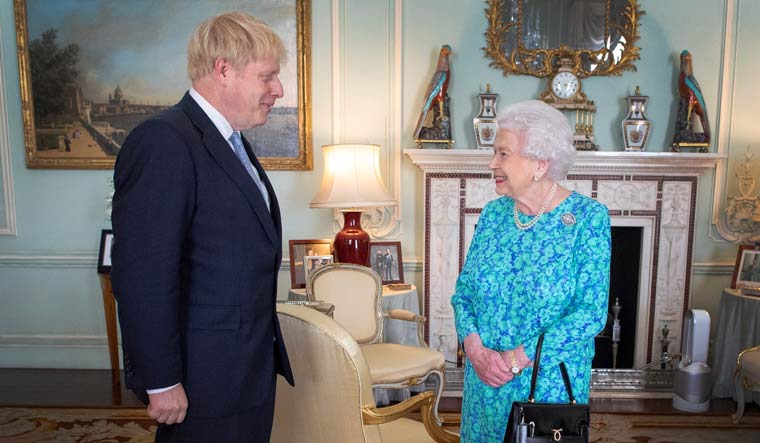It was a dramatic day in London, as the formal proceedings for Boris Johnson to be declared Prime Minister of the United Kingdom were concluded amidst political barbs and even a protest by Greenpeace.
By protocol, the day begins with the departing Prime Minister giving their final address at the Prime Minister’s Questions in the House of Commons. In this capacity, Theresa May suggested that opposition leader Jeremy Corbyn also resign in her wake. "Perhaps I could just finish my exchange with him by saying this: As a party leader who has accepted when her time was up, perhaps the time is now for him to do the same."
Theresa then had to go to Buckingham Palace and formally offer the Queen of England, Elizabeth II, her resignation. The Queen accepts the resignation and asks the departing PM to pick a successor. Traditionally, the successor is the democratically-elected candidate, although in moments of uncertainty, the Queen can make the final call — such as when she invited Harold Wilson to form the government in 1974 because he led the party with the most seats even though his opponent led the party with the most votes (and could have, in theory, formed a coalition government).
Since Boris Johnson won the leadership election of the ruling Conservative party, he had the right to become the prime minister.
On his way to Buckingham, his convoy was temporarily halted by a human chain of Greenpeace protestors. Greenpeace claims that Johnson’s campaign was partly funded by a climate-change denier and justified their obstruction as an attempt to give him their ‘climate manifesto’, a document they feel will address the UK’s stated national ‘climate emergency’.
Why we just blocked Boris Johnson's route to Buckingham Palace 👑
— Greenpeace UK (@GreenpeaceUK) July 24, 2019
Hint: #ClimateEmergency
>> https://t.co/TRrgQSZtlu
Earlier, prior to Johnson's visits, a group of former Greenpeace activists had projected an image onto the walls of Buckingham with the caption "Your Majesty, your new prime minister is a liar."
The obstructions notwithstanding, Johnson made it to parliament where he met with the Queen in the afternoon.
She formally received his audience and invited him to become PM and First Lord of the Treasury. Johnson accepted the title, kissed her hands, and went to 10 Downing Street where the newly-appointed PM is traditionally expected to deliver a speech.
In his speech, Johnson was emphatic that his government would deliver Brexit, that Britain would leave the European Union on October 31 with “no ifs, no buts”, adding that the “buck stops with me”. He added that while a no-deal Brexit was a remote possibility, it would still be “common sense” to prepare for one.
At 93 years of age, Queen Elizabeth has seen through the tenures of 13 prime ministers in her 66-year-reign, with Boris Johnson becoming the 14th to take power under her reign.
Theresa May delivered a farewell address, where she said that Johnson’s government’s successes would be “our country’s successes”.
US President Donald Trump offered his congratulations to the new PM.
Congratulations to Boris Johnson on becoming the new Prime Minister of the United Kingdom. He will be great!
— Donald J. Trump (@realDonaldTrump) July 23, 2019
The president of the European Council, Donald Tusk, had a concise congratulatory message for Johnson, appended to a short invite to join him for negotiations on Brexit. Tusk's position has been consistent that the EU would not offer further concessions on the exit deal with the UK.
Dear Boris, congratulations on your appointment. I look forward to meeting you to discuss - in detail - our cooperation.
— Donald Tusk (@eucopresident) July 24, 2019
Johnson's next challenge will be forming his cabinet, as prominent positions such as that of the Finance Minister have been vacated in protest against his appointment.


